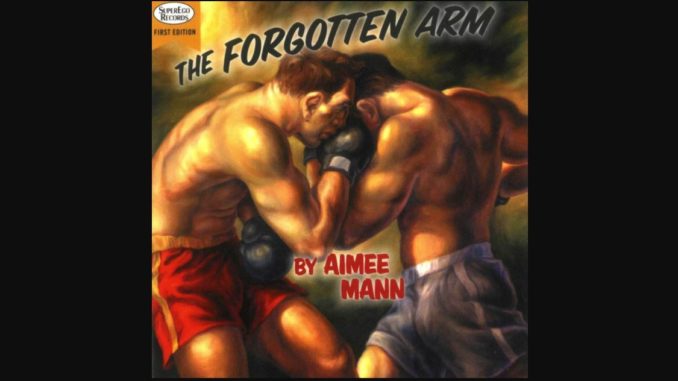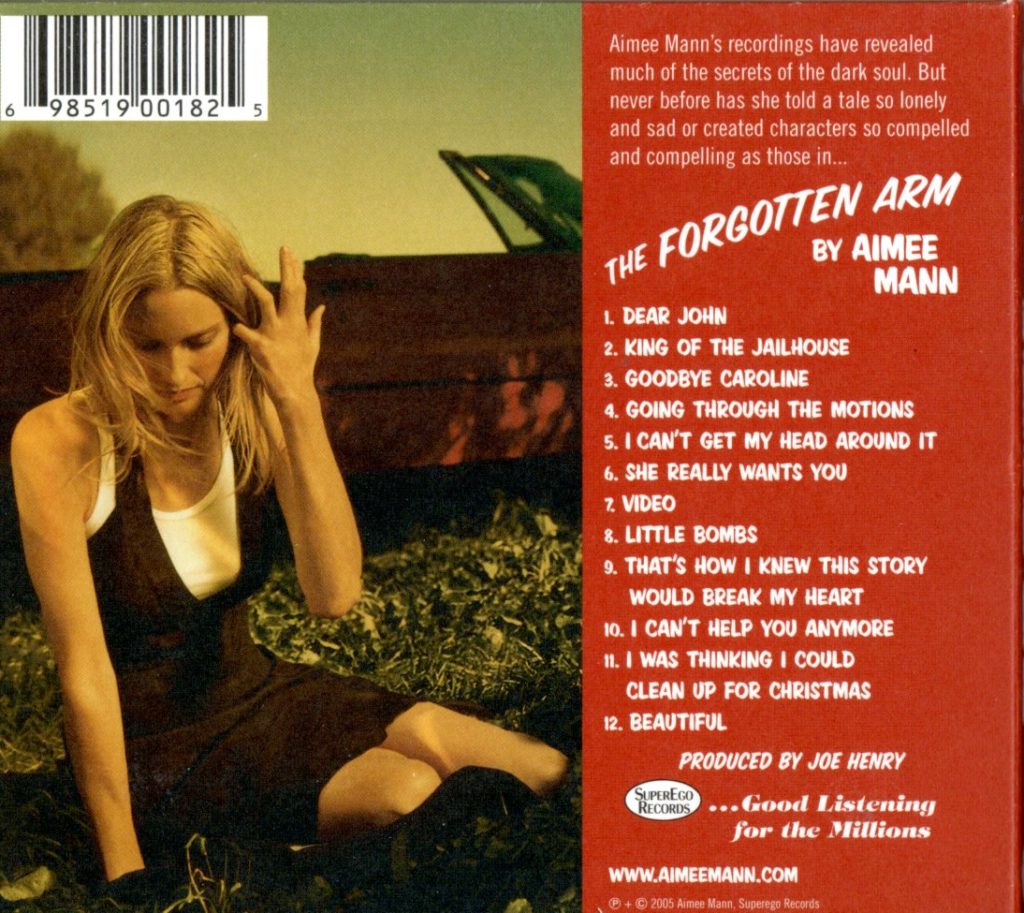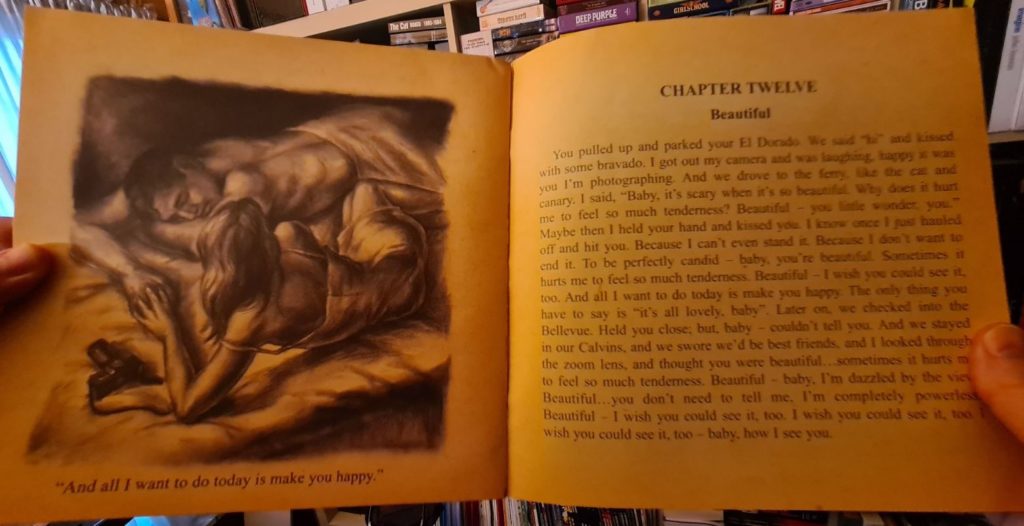
In the 1980s, Aimee Mann was a pop star with the new wave band ‘Til Tuesday, best known for their 1985 hit single Voices Carry. Towards the end of the decade, she even got to record (and appear in a music video) with Canadian prog gods Rush (Time Stand Still from their 1988 Hold Your Fire album). She went solo in the 1990s, and has been an independent artist since the early 2000s.
When Mann geared up to write and record her fifth solo album, it was shaping up to be something different. The Forgotten Arm would be her first concept album, telling a singular story from beginning to end. It was released by Mann’s own record label SuperEgo Records on 3 May 2005.
“I had already done this sort of thing with the Magnolia movie,” Mann told americansongwriter.com. “I found it nice and somewhat easy to create my own characters and basic story and then let songs develop from there.” She got an Oscar nomination for her soundtrack work on Magnolia, so she was off to an excellent start as far as making music to fit a story.
This time, the story would be her own. Ideas started coming after she was asked to write a song for The Human Stain, in which Anthony Hopkins plays a college professor who once was a promising young boxer, now hiding from his troubled past.
As it happens, Mann has a keen interest in boxing, having trained with boxing trainer Freddie Roach. Boxing has a direct part to play in the story background and accompanying illustrations, as well as being reflected in the album title. In boxing, “the forgotten arm” refers to a move in which one arm is constantly used to hit the opponent, causing him to “forget” about the other arm, which is then used to deliver a harsher blow.
Mann’s songwriting style has taken on a signature morose tone over the years, as she often explores the dark sides of human nature in her songs. She says, “There is always a fair amount of moments where I write something that I suddenly realize is a very apt description of a situation that’s uncomfortable or horrible, but that the very accuracy of it makes me laugh, even though I can’t really expect that other people will. It’s a bit of a gallows humour, maybe.” This is very much the case on The Forgotten Arm as well.

In looking closer at any of the songs on this album, they need to be seen in context of the whole story. The album tells the story about John, a Vietnam veteran and boxer, and his “kind of white trash” girlfriend Caroline. They meet at the Virginia State Fair sometime in the 1970s, where John is boxing an exhibition round (Dear John). They both hint at troubled backgrounds, and get the idea that they can escape their problems by running off together and travelling across the United States. Unfortunately they end up in more trouble than either of them could have imagined. Their relationship first begins to fray as John’s addiction to heroin and gambling comes to light (King of the Jailhouse). In Vegas, John leaves Caroline to try to get help (Goodbye Caroline) but resists treatment (I Can’t Get My Head Around It) and finally Caroline gives up on trying to help John (I Can’t Help You Anymore). And that’s not even half the album. The rest of the story relates the troubles the couple faces on John’s road to recovery, their separation, a fleeting feeling of redemption, before they finally meet again in the end. Is there a happy ending for John and Caroline, though? The answer to that question is at best a bit open-ended, but the potential is there.
“It’s a character study and a relationship study,” Mann says. ” There really is no absolute storyline, just a general one. Songs are based more upon themes. I would get a theme or idea and let it develop, then find some way of tying it in the storyline. Sometimes I had written a song apart from the concept, but went back and changed some lines here and there that would give it an identifiable connection with the story.”
This approach enables each song to hold its ground independent of the story while adding their own pieces of the puzzle to the overall whole.
In addition to including the lyrics printed in storybook fashion, the album contains a series of illustrations (one per song) which is also an important part of the storytelling. The package is incredibly tasteful and well put together, and won the 2006 Grammy Award for Best Recording Package for Mann and Gail Marowitz (co-art directors).

So many of the songs on this album would be interesting to look closer at. The album contains a lot of styles and moods, and picking one song to represent the diversity on offer is hard. From a story perspective, our characters go through a lot of bad stuff.
The final track on the album – the beautiful Beautiful – offers glimmers of optimism. Whether it points the way to a happy ending or not, it still carries with it a beautiful pledge. It is about seeing a person as they are behind any issues they may have – for seeing them as they truly are in every sense, and intensely loving that person.
You pulled up and parked your El Dorado
We said “hi” and kissed with some bravado
I got out my camera and was laughing
Happy it was you I’m photographing
And we drove to the ferry
Like the cat and canary
I said, “Baby, it’s scary
When it’s so beautiful
Why does it hurt me
To feel so much tenderness?
Beautiful
You little wonder, you”
The characters have been on quite a journey through this album. At the end of it all, Beautiful describes how they meet again after a period of separation. It is a nice meeting. They have both tried to sort out their lives, and are holding it together at least short term, helped by the motivation of seeing each other again. The song is sung using the voice of Caroline – i.e. from her perspective – and she admits to finding the meeting powerful yet scary. She finds John intensely beautiful in so many ways, but the fear of getting hurt again is right there under the surface. They went through some horrible times, as detailed on the album’s most heart-wrenching moment That’s How I Knew This Story Would Break My Heart.
But now, some time later, they are trying to put those times behind them, They are having a lovely day together, but the future is still uncertain, and there are doubts in the background. Will the nice moments last? Could things go bad again? Caroline feels deep affection and even love for John, but there is also a deep sadness that he clearly don’t have the same love for himself. Lack of self-love might be part of the problem, in the end, and the reason why he would not be able to hold on.
Caroline wants John to see himself as she does. She wants him to have a self-worth similar to how wonderful she thinks he is. This is the plea that the song ends with, and it is as simple as it is intense:
I wish you could see it, too
I wish you could see it, too
I wish you could see it, too
Baby, how I see you
For an album that puts the spotlight on the story, Mann did not change her usual approach when it came to writing the songs. “I start with the music,” she said. “This is the game I play with myself: the music has a story in it, and what is that story? Here is the emotional tone – what is a story that makes sense with that tone? What is a story that would bring you to that tone?”
Musically, the album has a well-defined sound just like most of her albums. Mann’s previous album Lost In Space had a lot of quirky sounds and carefully built keyboards, adding a lovely ambience to those songs. The Forgotten Arm was produced by Joe Henry, and has more of a vintage band approach – not just instrumentally, but the way it was recorded. Excluding vocals, nearly everything was recorded live over a few takes, which gives the album a modest but effectual simplicity and a tremendous live band sound.
“The story takes place in the early ‘70s and I wanted the music to reflect that,” says Mann. “If you listen to older music, it’s pretty basic. There aren’t all these extra sounds recorded in the background. This album was basically recorded live over a six day period. With most records you do drums first, then bass, and go on endlessly laying down guitar tracks, just to see what you can do. Most of the guitar parts are basically for insurance and you have the producer there to sort all that out. We didn’t really do that here.”
The result is outstanding. The Forgotten Arm remains one of Mann’s strongest albums. The concept is intriguing, resulting in better songs than one might think. The melodies are strong, the instrumentation and sounds at times very atmospheric. The album has ambience that allow the stories to take centre stage. And the story itself is poignant.
The artist herself is, as usual, harder on herself. “I almost wish it was even more structured,” she told interviewmagazine.com in 2009. “Some of the songs are not even as specific to the story as I would have liked. […] What’s interesting to me is drama and conflict. Things aren’t interesting without conflict and resolution of conflict—or striving towards a resolutions of conflict. To me that’s interesting. Life is a series of problems to figure out how to solve gracefully and with dignity. That is what life is and I can’t see it any other way. And that’s glorious, that’s great. It doesn’t mean anybody has to be in a bad mood either.”
Mann has constantly revisited the topics of empathy and the human condition throughout her career, perhaps no more than on her 2017 album Mental Illness. In an interview for that album on NPR’s All Things Considered, she said the following which rings very true for our characters on The Forgotten Arm as well: “I think it is hard to be a person. It is really hard to negotiate relationships, it’s hard to negotiate loss, it’s hard to have perspective on your own problems, it’s hard to break out of the habits and dynamics of your childhood. And people aren’t really naturally born with the skills to negotiate it. So I have a lot of compassion for people. Everyone’s struggling in some way.”

Facebook Comments